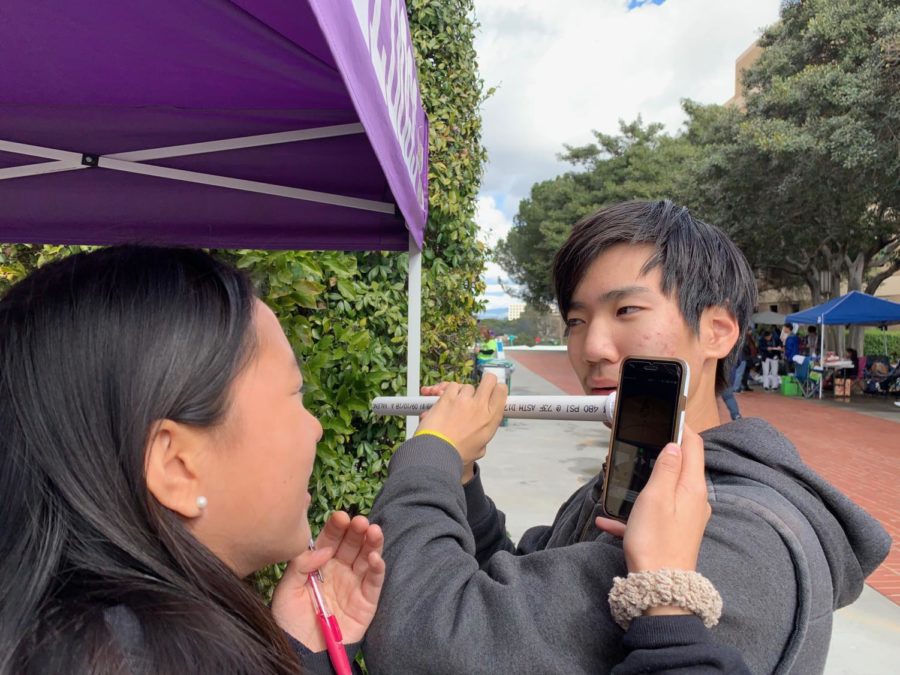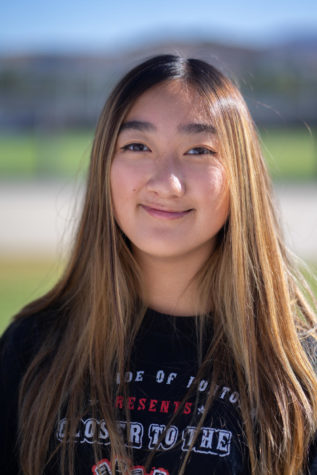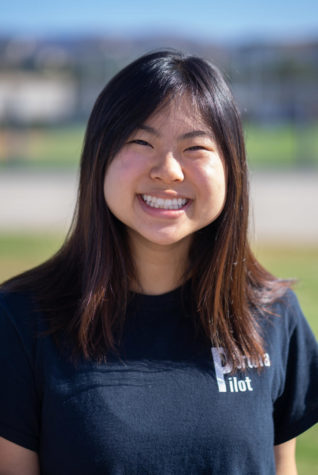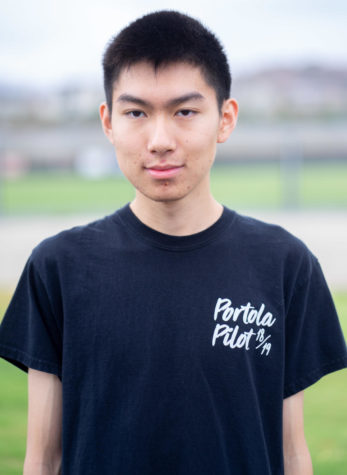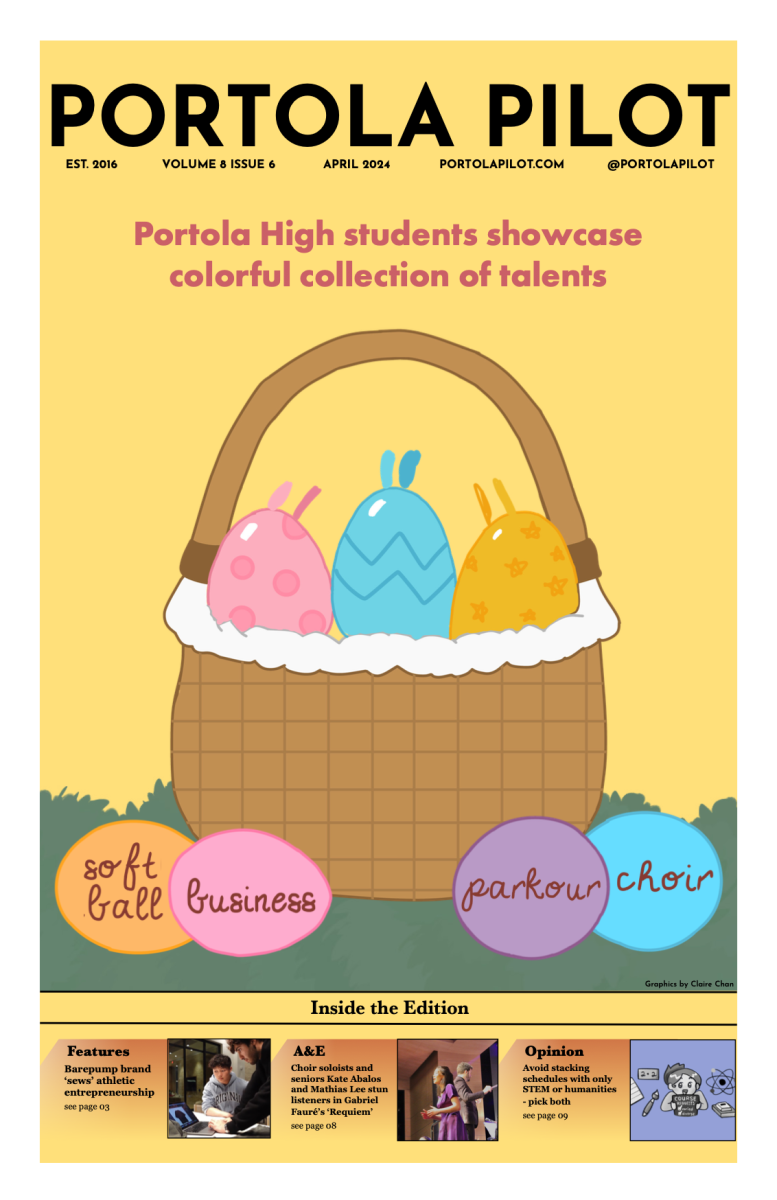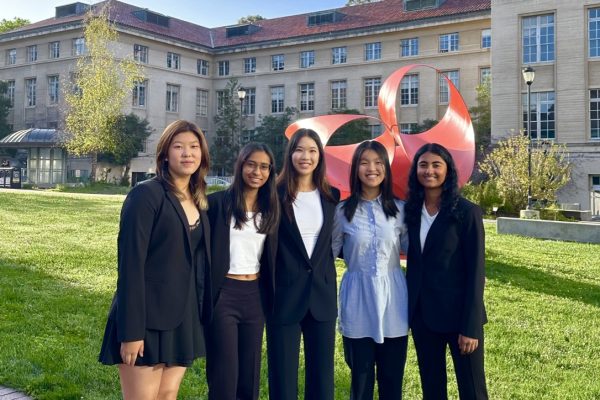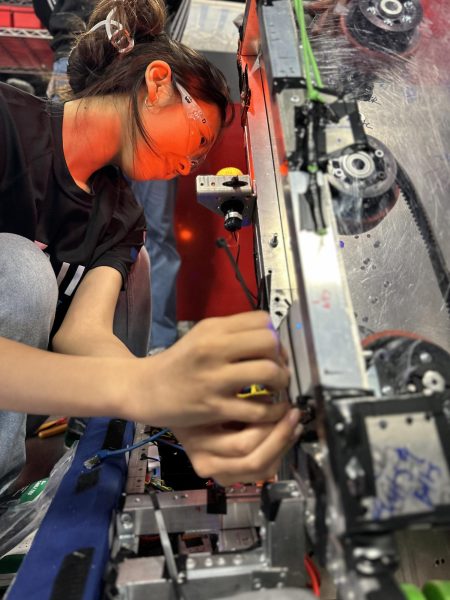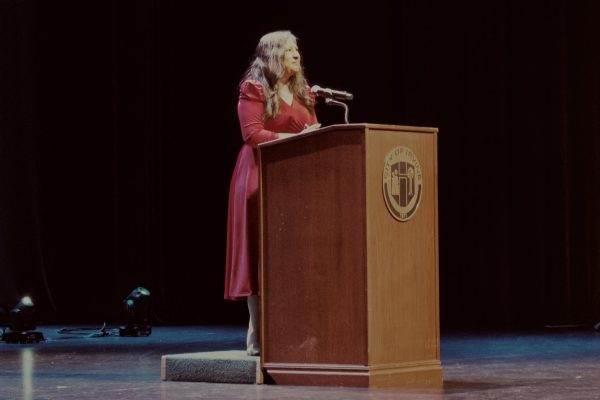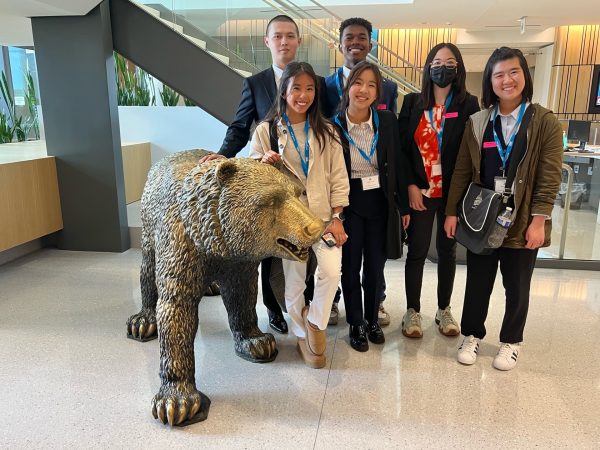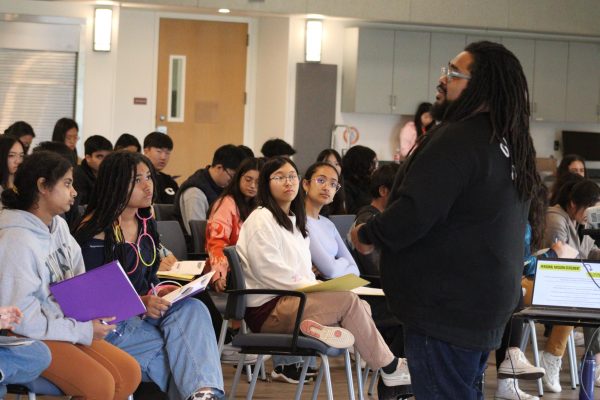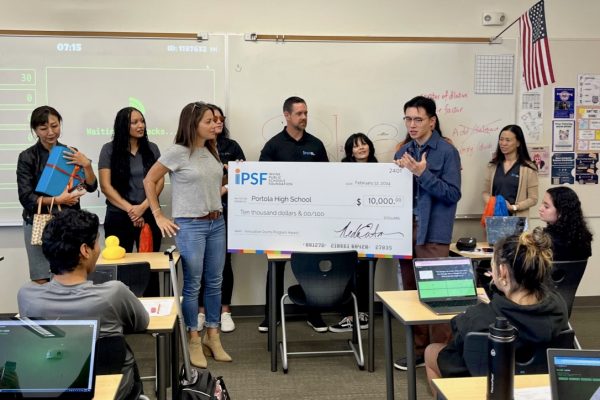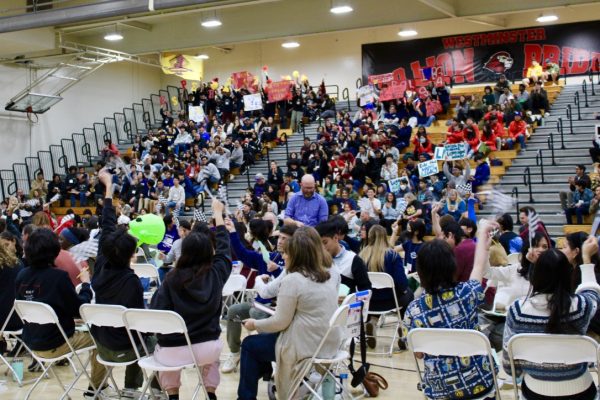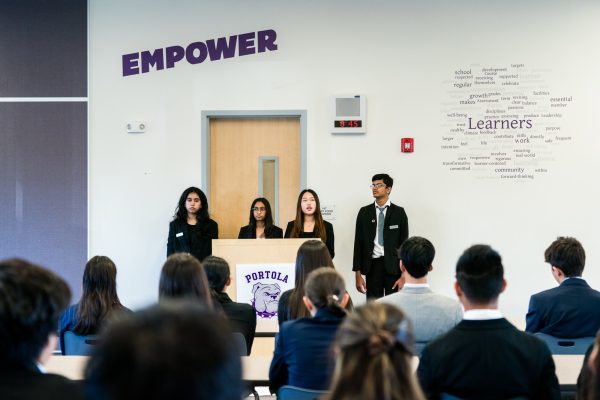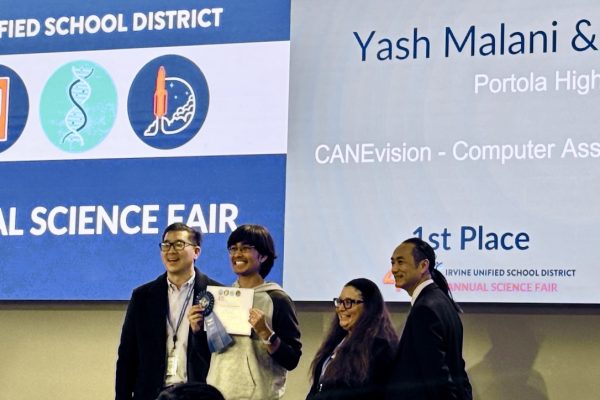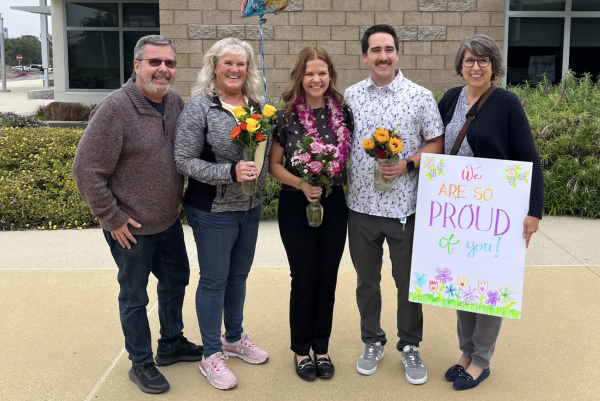Science Olympiad Advances to State From Regionals
Junior Yunseong Jung tests out the flute that he and partner junior Stephanie Zhang built to compete in the event Sounds of Music. In the event, team members play the twelve tone scale on the flute they constructed, with pitch frequency being tested for accuracy.
February 25, 2019
Science Olympiad placed fourth at the regional competition at University of California, Irvine on Feb. 9, advancing to the state competition on Apr. 6. The team competed against 35 other high schools in 23 events in topics ranging from biology to engineering.
The goal of the competition is to finish with the lowest score possible, with the score equal to the sum of all placings in events throughout the day; Portola High finished with a score of 164 points. Freshman Sabreen Alam and juniors Junhee Ryu and William Hsieh placed first in Experimental design; another notable award was Sounds of Music for juniors Yunseong Jung and Stephanie Zhang.
In the club, there is an A and a B team, with students participating in weekly tests in order to maintain or advance their placing in the A team. Members spent dozens of hours building, testing and studying since summer. As a result, students have the opportunity to explore more nuanced aspects of certain topics that they would not be able to in the classroom.
“I learn things that I don’t get to learn in the science classroom, and I can dive deeper in my passions for science,” freshman Chloe Lim said. “I can definitely focus on the areas that I’m interested in. For example, I developed an interest for chemistry this year and was able to dive really deep in the field and enjoy myself.”
With a competitive streak comes a tight family bond; teammates support each other and study for events together, building up for success individually and as a group. Freshmen, sophomores and juniors are able to set aside age gaps in favor of working toward a shared goal, creating a unique connection between upper and lowerclassmen that can be otherwise difficult to achieve.
“[My favorite part of Science Olympiad is] the community and the friends that you can make. It’s not just about academics; it’s about socializing and having fun,” freshman Matthew Kim said. “Because in the tournaments, even though you have to compete and demonstrate your knowledge on certain events, you’re also supposed to have fun with your members.”
The teams competed in fewer invitations this year than the past year, with the A team attending two and the B team only attending one, but both groups saw an improvement across the board, specifically in events that students previously struggled in such as Herpetology and Chemistry Lab.
“Their devotion to science and Science Olympiad is absolutely outstanding,” club adviser Sharon Fronk said. “The enthusiasm that they have amazes me every single time we come to a competition.”



